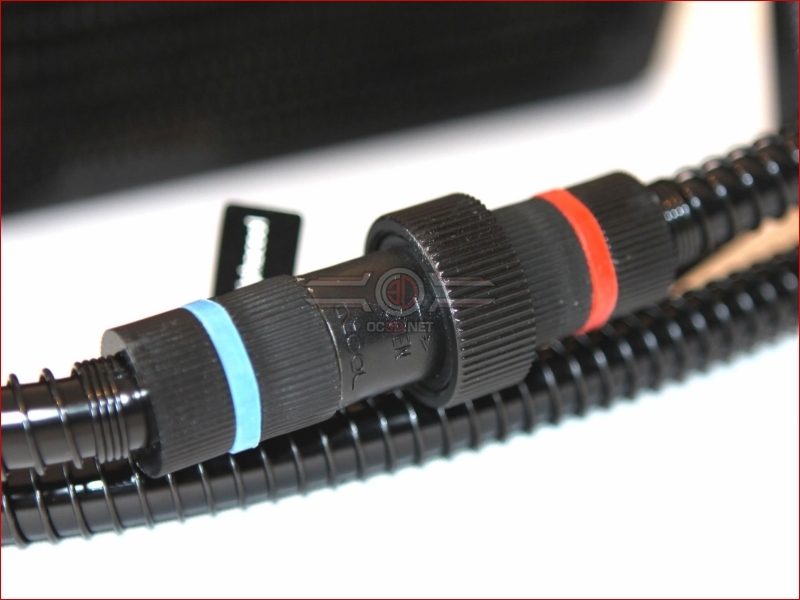Alphacool Eisbaer LT 240 Review
Up Close:Â Radiator and Cold Plate
The Radiator and cold plate follow much the same recipe as we’ve seen in many AIOs, save for the inclusion of a quick release connection that enables expansion of the system, but more of this later.
Â
The radiator has eleven visable water channels with just sixteen fins per inch, which is a lot less than we’re used to seeing in 240mm AIO rads. It’ll be interesting to see that effect on performance this lower than average FPI count has.
Â
The rad is connected to the gloss black tubing by means of standard G1/4″ compression fittings. The tubing appears to be 11/8mm tubing, so if you’re looking to expand the system, it shouldn’t be too difficult to find tubing and fittings to match. The only thing we’re not too sure about is the anti kink coils. We guess they’re a little marmite, you either love them or hate them. Actually, we’re willing to bet it’s not quite like that, more the case that you either hate them, or can tolerate them.
Â
Unlike the original Eisbaer with its highly polished cold plate, the LT has a brushed coldplate. How much of a difference this makes is yet to be seen. What can’t be denied though is that it’s huge.
Â
The pump housing is a much smaller affair than the huge offering in the original Eisbaer, and we think as a result it looks more friendly, and less bulky.
Â
Unlike a few of its more expensive, and less expansive competitors (see what we did there???), Alphacool have resisted the urge to bequeath the top of the cold plate assembly with illumination, never mind RGB functionality. What you do get though is a rather classy Alphacool logo picked out in etched chrome on brushed aluminium.
Â
One of the main selling points of the Eisbaer is the Quick disconnect fitting that allows the addition, not only of Alphacool’s own proprietary extensions such as the GPU cooler Eiswolf or for that matter any number of other manufacturers extensions. All you have to do is source the appropriate QD fitting, and away you go. It’s worth pointing out, that although these are “dry” QDs, as always, you should expect a few drips.










